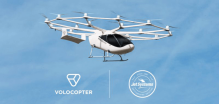The launch comes as 5G is set to introduce support for applications that demand ultra-low latency – the time it takes for a signal to make a round-trip on the network. By distributing applications to multi-access edge computing (MEC) locations at the periphery of the network – closer to mobile users – signals travel shorter distances, dramatically reducing latency. Cloud RAN architectures enable this new class of time-sensitive applications by distributing certain RAN functions to the same MEC nodes at the edge of the network. Scalable, ultra-low latency, and deterministic mobile transport is required to meet the stringent infrastructure demands of Cloud RAN architectures, and the heightened user experience expectations of 5G time-critical services.
Employing strict traffic prioritization and frame pre-emption, the 1830 TPS creates deterministic paths through a switched Ethernet network. Such determinism was previously unavailable in packet-switched networks and is essential to ensuring the reliable delivery of critical traffic with stringent latency demands. High-precision timing provides accurate synchronization for 5G radios, while leveraging Nokia RAN expertise in mapping Common Public Radio Interface (CPRI) streams enables the 1830 TPS to achieve nearly 40% greater bandwidth efficiency than competing alternatives.
As 5G networks are deployed, they will often coexist with existing 4G networks, requiring a mobile transport solution that addresses multi-generational rates and protocols. With Radio-over-Ethernet encapsulation, the 1830 TPS is able to transport legacy CPRI streams together with native Ethernet traffic, including eCPRI and traditional backhaul traffic, onto a unified time-sensitive network.
Marcus Weldon, CTO and President of Bell Labs at Nokia, said: “As our customers roll out end-to-end 5G architectures, they need transport solutions that support existing fronthaul and backhaul traffic, as well as Cloud RAN architectures with optimized performance. The 1830 TPS allows them to optimize the end-to-end transport of their deployed 4G and new 5G radio access networks with a single platform.”
Sam Bucci, Senior Vice President of Optical Networking at Nokia, said: "With the introduction of the 1830 TPS, we are fundamentally improving the economics of deploying 5G centralized and Cloud RANs. With time-sensitive networking, mobile operators will be able to usher in new real-time services to better monetize network investments while making the transition to cloud-native architectures that introduce better performance, flexibility, and cost savings of up to 50% compared to existing fronthaul alternatives.”


















